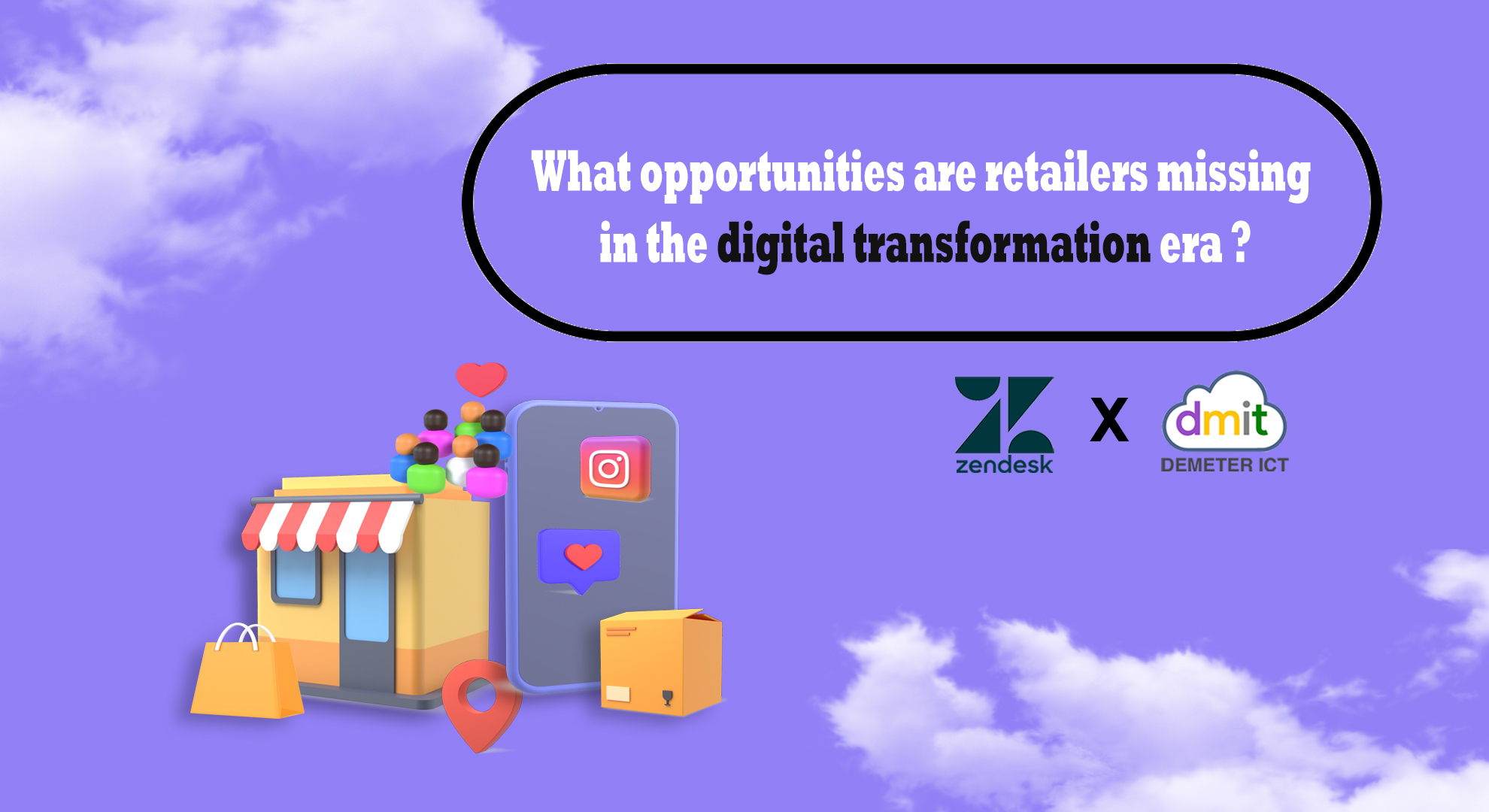What opportunities are retailers missing in the digital transformation era?
Retailers can get a head start on Instagram and other instant messaging apps, in order to make their customer service outstanding.
This year’s National Retail Federation (NRF) event takes a break because of the pandemic that has turned the retail industry upside down and focuses on responding to change. The world’s largest retail trade association invites industry experts to share their stories and advice about how to adapt to the new normal to cater consumers and adopt new communication channels. From adapting to the capabilities of e-commerce to seeking new, more human ways to communicate with consumers. Retail leadership focuses on creating great customer experiences. Although almost all content is related to creating a smooth and comfortable way to connect with customers, there’s still work to be done on a key core component: digital instant messaging channels like Facebook Messenger, Instagram and WhatsApp.
Over the past year, the lockdown has wiped out in-store purchasing options overnight, changing the way customers shop. Since then, people have switched to digital shopping, such as e-commerce and contactless store pickup. Suddenly a major change occurred. According to McKinsey research, in just 90 days ecommerce has grown over the past 10 years. Forrester still found that over the past year, more than 50% of total U.S. retail sales came from digital channels.
In just 90 days, ecommerce growth spans over 10 years.
There is also an increase in e-commerce around the world. Emerging markets saw the biggest shift in consumers shifting to online shopping. According to the minutes of the United Nations Conference on Trade and Development on COVID-19 and e-commerce: A Global Review Mercado Libre, an online marketplace in Latin America. Mercado Libre in the second quarter of 2020 sold twice as many products per day compared to the same period in 2019. The report states that the rapid growth of e-commerce tends to continue during the economic recovery. “In the digital economy Countries that properly utilize the capabilities of e-commerce will have a greater chance of benefiting from goods and services in the global market. while countries that fail to comply are more likely to lag behind.” United Nations Conference Trade and Development Chamika N. Siriman, Director of Technology and Logistics said in a statement related to the report.
The savvy retailer is rapidly changing the way they operate and moving from a store-centric model to an omni-channel selling. Most businesses have successfully transformed themselves, they will survive the epidemic. Despite the major trend toward online shopping, many retailers still have not adopted a smartphone customer service pipeline. Historically, it is difficult for retailers to replicate the high-end experience of their stores on digital platforms. Resulting in sometimes they lost interest in ecommerce. How can consumers experience the floral scent of a perfume or the comfort of wool without having to personally experience it? Ensuring that customers have the great experience they expect on an online platform is not an easy task. Our research shows that one out of three customers sent an instant message to a business for the first time in 2020, and 74% of those customers said they would continue to do so in the future.
How instant messaging is changing customer service for retailers.
There is a clear gap between the needs of customers and the goods or services offered by retailers on mobile and digital platforms. A successful retailer not only sells products online, but also provides easy and convenient digital channels for customer contact. According to Zendesk’s Customer Experience Trends report: “64% of customers are trying new ways to connect with customer service in 2020, with messaging and bots leading the way.”
As more people shop online, more people will ask customer service questions about returns and exchanges, size charts, delivery delays, and status updates. Messaging is convenient for both customers and customer service staff. Customers who shop online are more likely to seek assistance through their preferred digital channels. Messaging channels such as Instagram provide multiple ways to shop without leaving the app. Customers will expect support within the conversation.
Why do customers want to be served through Messaging?
Messaging support is fast, private, convenient and secure. Customers want to use a channel that they use to connect with friends and family. Customers often resolve issues more quickly. Messaging also provides rich, real-time, interactive conversations tailored to customer needs which a difficult to achieve through email and other traditional channels. Due to the asynchronous nature of messaging, customers don’t necessarily expect an immediate response, giving agents some breathing room.
All of the above benefits pay off for businesses investing in Messenger, Instagram, and WhatsApp: Our research shows that using Messenger for customer support leads to the highest CSAT scores of all support channels.
Messaging is not only a trend, but also a change in the way customers are
expected to serve.
The popularity of social media apps in 2020 is higher than other channels and will continue to grow, especially among younger groups. The good news is that messaging pipelines are easy to set up and deploy, while providing a better experience for agents. In fact, 50% of agents are more likely to use instant messaging to communicate with customers than live chat. Because multiple tickets can be processed at the same time and the conversation doesn’t disappear even when the chat window is closed.
Delivering a great customer experience means delivering services that match people’s preferred channels. Whether it’s shopping in-store or simply shopping at home on a smartphone. In order to fulfill the ever-changing needs of consumers, retailers must provide first-class service, whether face-to-face or digital. Before others are aware of the trend, Foresighted retailers can seize the opportunity to lead the wave of successful customer experience.
- For more information, Zendesk prices with special promotions, call 02 030 0066.
- support@demeterict.com






